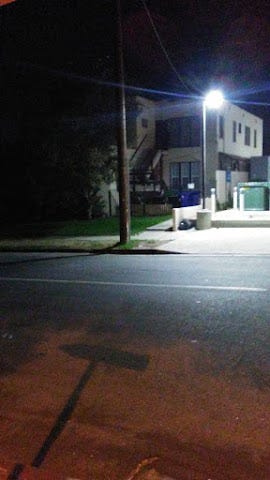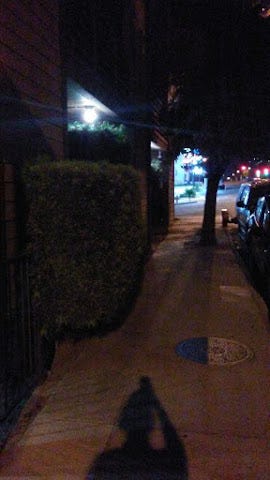Los Angeles is a city that should not exist. No desert was meant to hold an urban hub of this size. It is a non-location, a place that that manages to weirdly persist due to simple inertia over sustainability. The wildfires that grow in size and intensity every season, ever-encroaching into La-La Land, are not only general reminders of a planet that will soon be too warm to sustain civilization; they feel like deep time retching up a virus contracted long ago. That it is also where the United States manufactures its ego, its own version of cultural relevance, is only too appropriate, as the 2018 burning of Malibu makes so very clear.
The further one travels from the city’s most famous hearts, however, the more frequent and undeniable the desert becomes, the more Los Angeles seems to become ordinary, pedestrian, completely and maddeningly unremarkable. Take Eagle Rock, wedged between Pasadena and Glendale, two entirely separate municipalities both from each other and from the city of LA, it is something of a transition point from urban to suburban and quickly into exurban. Directly to the neighborhood’s north are several miles of highway and relatively sparse urban sprawl that quickly spill into Angeles National Forest.
Walking along the edges of Eagle Rock is a lesson in how an unplanned city architecturally improvises. The palm trees and cacti are predictably everywhere, incorporated into the landscapes of well-to-do middle class homes and shops. But venture out along Colorado Boulevard in the direction of Glendale; watch the pretense of uniqueness give way to the prefabricated and undeniably utilitarian.



Walk under the highway, perhaps to get a pack of cigarettes from the nearest gas station, and you’ll see the ways in which the architecture of commerce utterly fails in its notion of “welcoming.”
Gas stations may have themselves given up on being welcoming long ago — or at the very least traded it for overwhelming you with the illusion of unlimited choice — but when you turn back around you come to a real estate office: "Lighthouse Realty Associates.”



When I first walked by it, I had a very odd kind of flashback, to summer vacations in the Outer Banks of North Carolina. The wood on the building’s side is deliberately a bit rough even as it is painted an earthy brown, warm in intent if not in actuality. The bushes out front are sculpted and well kept, but read as a species of plant more native to the American South than that of the West. Even the sign and name of the place appeared as more reminiscent of the east coast. Of course, there are plenty of lighthouses in Southern California. But they do not play as prominent a role in constructing a historical narrative and current imaginary like they do back east.
Of course, there is nothing specifically North Carolinian about this little plot of urban design. To me it only read as such because of the contours of memory that have been left in my own emotional and mental being by a childhood that was uniquely mine. But that’s the point. How many current concepts in the wheelhouse of contemporary office design have made “welcoming” and “cookie cutter” interchangeable? What does this do to our notion and experience of space? Of time? Of our ability to progress on either plane? Are we left with any indication that we are in Glendale other than a bestowed but somehow shared knowledge that we are just… in Glendale?
Turn around. Walk back into Eagle Rock and into Los Angeles, a distinction you can make thanks not to any landmarks or lighthouses, but simply because the signs tell you that you have crossed over from one to another. But then you see an unmistakable reminder that you are back in LA and, in fact, have never left the county: a small encampment of tents under the overpass.
Los Angeles’ homelessness crisis is one of the worst in the US, and one doesn’t have to go to Skid Row, with its 8,000 strong tent city, to be confronted with this. It is on every other block, in every neighborhood save for the richest (where residents experiencing homelessness are hassled along by compliant cops and, increasingly, private security forces). And if that somehow fails to remind you, then at the very least you will see it whenever you try to find a new apartment in your price range.
In August of 2019, a cluster of tents in Eagle Rock was set on fire. Nobody was hurt, but the blaze ended up scorching 45 acres and required over a hundred fire fighters to extinguish. Police later arrested Daniel Noguiera, son of the Eagle Rock Chamber of Commerce. This was not a random act of sadism; it was weaponized NIMBY-ism, middle-class spite in the shape of a Molotov.
Which brings us to the real problem. How much of the unremarkable, the quotidian and faceless that tweaks with our sense of time and place, is simply synecdoche for this kind of violence? Can the two be meaningfully separated? How much have we come to accept and integrate into our daily experience? And how much, on however subconscious a level, do we innately understand and accept this?






